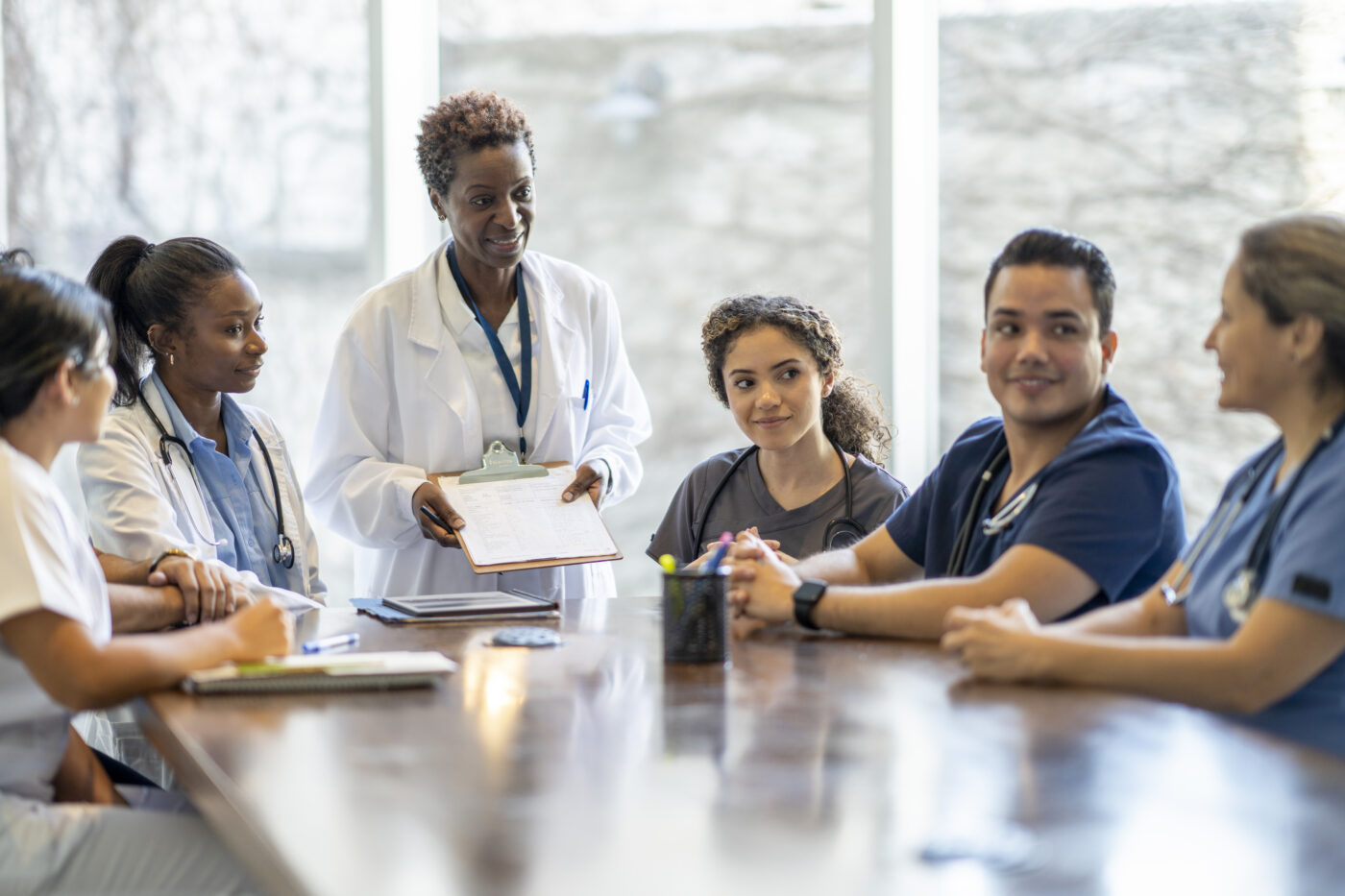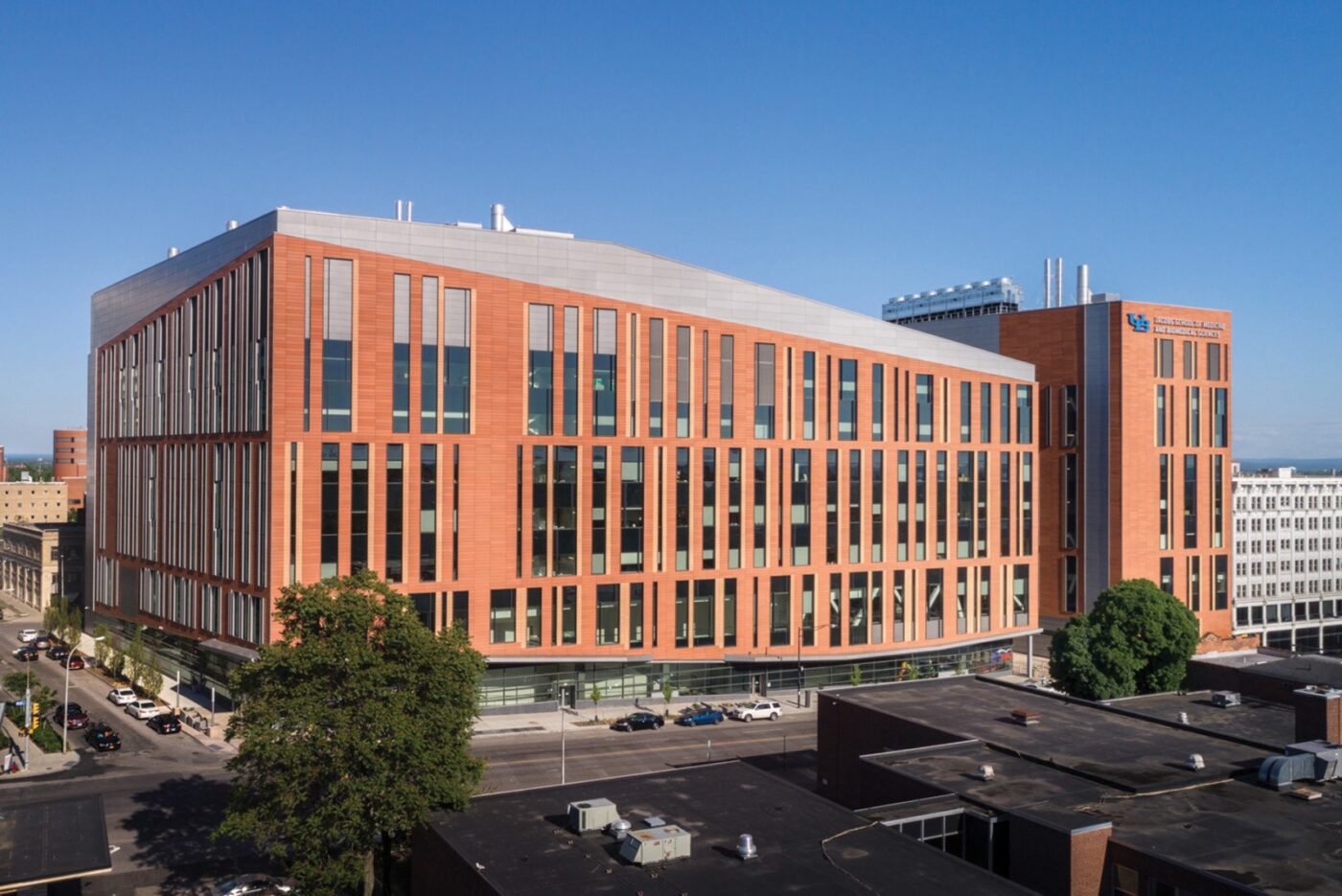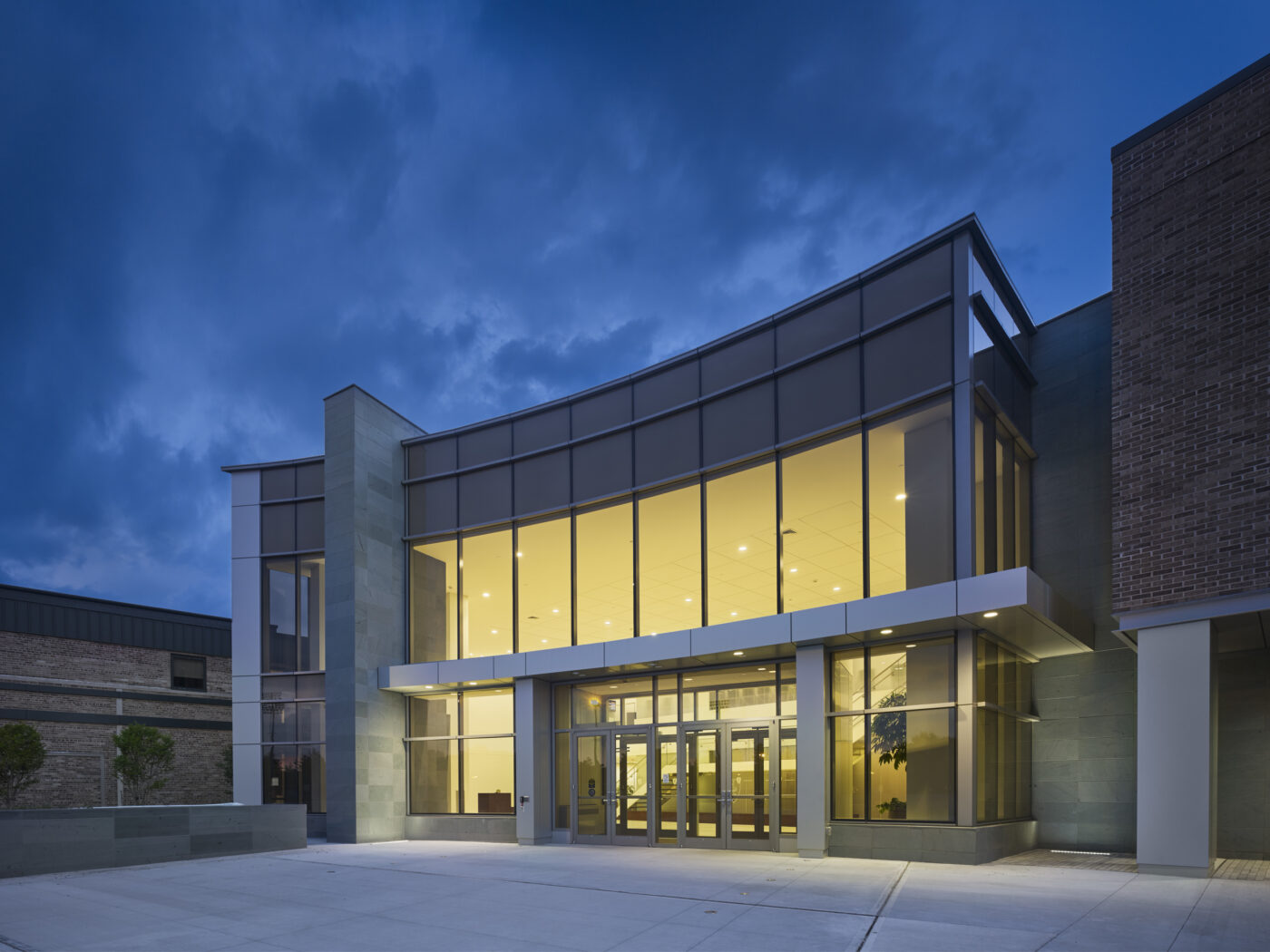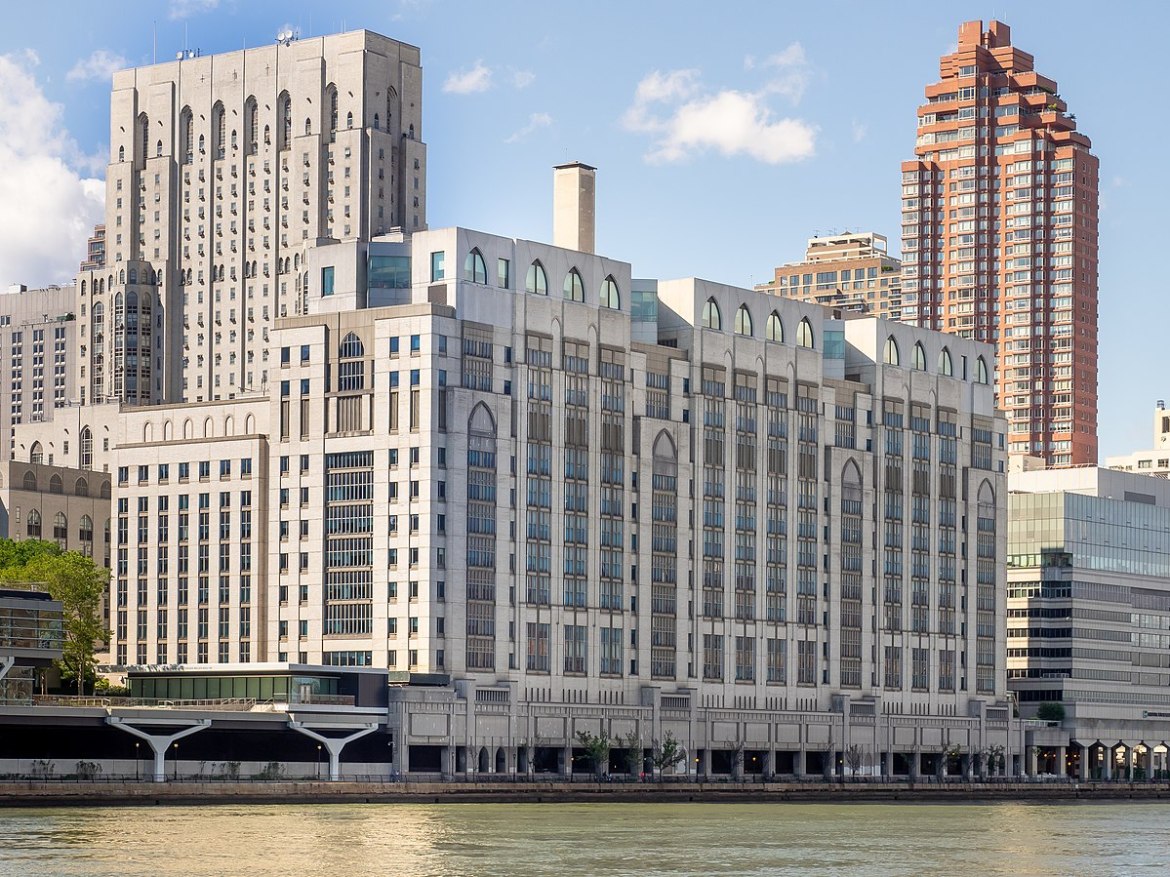The NYIT College of Osteopathic Medicine is located in Long Island, New York, and is one of just three New York DO schools. Aside from the Long Island campus location, there is also an NYITCOM Arkansas location that is in partnership with the Arkansas State University.
NYITCOM was founded in 1977 and is one of 17 New York medical colleges that aspiring physicians can choose from. NYIT is a well-known private college that offers its students with a variety of resources to strengthen their education. Worldwide the college touts a total of 7,711 NYIT students across all available programs. 94% of all New York Tech graduates are employed within just 6 months or go on to graduate school.
Be an Informed Applicant
Like all medical schools across the country, New York medical colleges have school-specific requirements and guidelines. Understanding the university’s identity, selection criteria, and programs will help you focus on your application and put your best foot forward.
This article covers:
- NYITCOM Rankings
- Medical Programs at NYIT College of Osteopathic Medicine
- Selection Factors: What NYITCOM Looks for in an Applicant
- Academic Requirements
- NYIT Medical School Acceptance Rate, Class Profile, and More
- NYIT College of Osteopathic Medicine Tuition and Cost of Attendance
- AACOMAS Application and NYIT Secondary Application
- NYIT Secondary Application: Essay Prompts, Sample Answers, and Advice
- DO School Admissions Consulting
- Voluntary Healthcare Internships Abroad
Personalized Help
Many students find themselves overwhelmed by medical school applications. Each school you apply to has its own unique admissions process. To best help you get into your dream medical school, consider working with an admissions consultant.
A medical school admissions consultant will help and guide you through every stage of the application process while offering personalized feedback and support to help you succeed. International Medical Aid can help you curate a competitive application, highlighting your strengths and tailoring your message to each school.
If you are like many medical students, you will benefit greatly from our personalized medical school admissions consulting.
Why the NYIT College of Osteopathic Medicine?
For those who have been searching the internet for “medical school near me” and “DO schools in New York”, NYITCOM may be the right choice for you. The college is dedicated to helping future physicians receive the best and most technologically advanced education possible. NYIT offers much more than just DO programs, the university has a total of 100 plus tech-focused programs and areas of specialization.
NYIT College of Osteopathic Medicine also offers incoming students with a highly diverse campus experience and great financial aid options. NYIT has nearly 8,000 students, representing 70 countries and 42 states. NYITCOM offers financial aid and 99% of first year students receive financial aid through the college. This financial aid package is in addition to the college’s already low out-of-pocket tuition cost, with NYIT having the lowest out-of-pocket tuition cost among all private colleges in New York. NYITCOM also offers a variety of special scholarships for veterans, alumni, transfer students, EMS, firefighters, children of police, and K-12 teachers.
NYIT College of Osteopathic Medicine Rankings
- #133 Most Graduates Practicing in Medically Underserved Areas
- #128 Most Graduates Practicing in Rural Areas
- #66 Most Graduates Practicing in Primary Care Fields
Medical Programs at NYITCOM
Before applying, it is crucial to research the different programs offered by NYITCOM. This research will aid in your decision of which medical school is a good fit for you and help you focus your application.
In this article, we will be discussing the 2 main degrees offered by NYIT College of Osteopathic Medicine. These 2 degree programs are the college’s DO program and the Emigre Physicians Program (EPP).
DO Program
New York Institute of Technology College of Osteopathic Medicine’s DO program is a standard 4-year program. The DO program at NYIT integrates biomedical and clinical sciences through the use of innovative teaching methods.
The first 2 years of the program follow NYIT’s pre-clinical curriculum, while years 3 and 4 begin the clinical curriculum. During the last two years of the program, students will attend several clinical clerkships in a variety of specialties including emergency medicine, internal medicine, family practice, and pediatrics.
Emigre Physicans Program (EPP)
The EPP program at NYIT educates and retrains emigre physicians who were born and educated outside of the United States. New York Institute of Technology College of Osteopathic Medicine is currently the only college within the United States that offers this type of unique retraining program.
Here are a few of the key details of the program to consider.
- Admission is competitive and highly selective.
- Four-year, full-time U.S. medical school program with up to 35 seats available.
- Émigré Physicians Program (EPP) students are fully integrated into the entering D.O. class and participate in all aspects of student life; research opportunities available with faculty.
- Admitted students are strongly discouraged from working full-time throughout each academic year.
- Students must successfully complete all academic requirements in order to qualify for graduation.
- Medical residency follows successful graduation. Length of residency varies depending on medical specialty.
Selection Factors: What New York Institute of Technology College of Osteopathic Medicine Looks for in an Applicant
What exactly is the NYITCOM looking for in medical program candidates—MCAT scores, grades, and internships? What DO school requirements do you need to meet to be accepted into NYITCOM?
Many colleges take a holistic review approach when looking over incoming admissions applications. This means an evaluation of your entire application and trying to get the big picture idea of who you are not only as a candidate but as a person. If you want to get accepted into the NYIT College of Osteopathic Medicine’s DO program, be sure to focus on and highlight these criteria in your application. Don’t be afraid to reach out for personalized help with your application.
Application Requirements for NYTICOM
The New York Institute of Technology College of Medicine has specific academic criteria and admission requirements that applicants must meet in order to receive a secondary application. Failure to meet the requirements will result in not receiving a secondary application.
In addition to the academic requirements set in place by NYITCOM, students must also be able to follow, demonstrate, and adhere to the following technical standards.
- Observation – Candidates and students must have sufficient vision to be able to observe demonstrations, experiments, and laboratory exercises in the basic sciences. They must be able to observe a patient accurately at a distance and nearby. It is essential to have adequate visual capabilities to assess structural asymmetries, range of motion, and tissue texture changes.
- Communication – Candidates and students should be able to speak, hear, and observe patients in order to elicit information, examine patients, describe multiple patient characteristics, and perceive nonverbal communication. They must be able to communicate effectively and sensitively with patients. Communication includes the ability to read and write. One must be able to communicate both orally and in written form with other members of the healthcare team.
- Motor – Candidates must have sufficient motor function to execute movements required in the general and emergency care of patients. Osteopathic physicians are required to be able to perform cardiovascular resuscitation, insert catheters, open obstructed airways, perform obstetrical maneuvers, and operate various diagnostic and therapeutic devices, as well as perform osteopathic manipulation, among other procedures. All of these require both gross and fine muscular movements, equilibrium, and use of touch and vision.
- Sensory – Osteopathic students and physicians need enhanced tactile abilities. Should a candidate have significant tactile, sensory, or proprioceptive disabilities, he or she would have to be carefully evaluated prior to admission, to determine if they are otherwise qualified with or without reasonable accommodation. Problems might be present in individuals who have had previous burns, loss of sensation, scar formation, or malformations of the upper extremities.
- Strength and Mobility – Osteopathic manipulative techniques often require upright posture with sufficient extremity and body strength. Mobility is required when attending to emergency codes and performing CPR. Individuals with limitations in these areas would have to be carefully evaluated prior to admission, to determine if they are otherwise qualified with or without reasonable accommodation.
- Participation in Osteopathic Manipulative Medicine Laboratory, Doctor Patient Relationship (Clinical Skills), and Clinical Encounters – Osteopathic physicians, in particular, use touch as part of the osteopathic approach to diagnosis and treatment. Therefore, osteopathic medical students must be able to tolerate touching and being touched by others as part of the educational process for learning examination and treatment skills. This means that non-sexual body regions being examined and/or treated will need to be sufficiently exposed for observation, palpation, and treatment, regardless of age, sex, gender, nationality, religion, race, or body size. The examination and treatment will be conducted in a respectful and professional manner that fulfills the above requirements.
- Behavior and Social Attributes – Candidates and students must possess the emotional health required for full utilization of their intellectual abilities, the exercise of good judgment, the prompt completion of responsibilities, and the development of mature, sensitive and effective relationships with patients. Osteopathic education requires the ability to tolerate physically taxing workloads and adapt to changing environments. Candidates and students must display flexibility and a spirit of cooperation with faculty, classmates, and colleagues. Students must demonstrate the mental capacities of receptive and expressive language, which are necessary to the practice of osteopathic medicine, as well as the ability to fully process information in written and verbal forms. If disabilities in any of these components occur, the student must demonstrate appropriate and accurate adaptive coping skills to overcome any deficit. The practice of medicine infers the protection and safety of patients, not just the ability to pass preparatory examinations. Physicians are responsible for those who place themselves into their care and must demonstrate the ability to rapidly process information, make decisions, and perform the appropriate interventions. Certain personal characteristics are expected of a physician. These include integrity, compassion, interpersonal skills, and motivation.
GPA and MCAT Requirements
NYITCOM’s application requirements for GPA and MCAT are not listed on their admission website. While there is not a minimum MCAT score or GPA required to submit an application to NYIT College of Osteopathic Medicine, applicants should still review recent class profiles and ensure their stats are on par with the average of matriculants.
Volunteer and Clinical Experience
The New York Institute of Technology College of Osteopathic Medicine does not list any specific extracurricular or volunteer experiences that applicants must have before applying. However, most colleges highly value these types of experiences, and having them on your application is always recommended.
What counts as volunteer service and clinical experience:
- Clinical Experience – Experience with patient exposure can be gained through volunteering or working at hospitals, emergency rooms, extended-care facilities, and homeless clinics.
- Volunteer and Community Service – Demonstrate your involvement within your community by participating in community service or volunteering.
- Research – Many medical schools research to be a crucial part of the preparation for medical school. Research experience can be performed at any site and in any discipline. Be able to describe your projects, questions asked, and your role in the conducting of the research.
- Leadership – Leadership can through a variety of avenues such as in the community, church, at work, or at school organizations can be added to your application.
- Extracurricular Activities – List any extracurricular activities you partake in as the ability to juggle these activities is a strong indicator of how you handle responsibilities and the potential stress and demand of medical school.
NYITCOM Letters of Recommendation
Being a competitive applicant includes providing letters of recommendation. The letters you submit should be compelling and demonstrate your potential for success in the medical field.
These letters should be written by people who you trust and who can accurately portray your integrity, interest in medicine, academic ability, interpersonal skills, and resiliency. For more information or details about who is best suited to write you a letter of recommendation, check out the NYIT College of Osteopathic Medicine’s website pertaining to admission requirements. They neatly outline examples of who should write academic letters of recommendation and who should write non-academic letters of recommendation.
Here are the NYIT guidelines and requirements for submitting letters of recommendation. All letters of recommendation should be submitted through the AACOMAS Letters Service. Please keep in mind that the majority of medical colleges prefer letters of recommendation written by a Pre-health Advisory Committee.
The NYIT College of Osteopathic Medicine requires applicants to submit 1 Pre-Health Committee or composite letter. In the event that an applicant does not have such a committee at their institution, applicants can submit 3 individual letters. Of these 3 letters, 2 should be from individual faculty members (1 science faculty member) who have taught you. The third letter should be from a supervisor in a long-term position, such as work, research, service, or clinical experience. NYITCOM also strongly recommends providing additional DO/MD recommendation letters from non-family members.
Required Coursework for NYIT College of Osteopathic Medicine
Students who are interested in applying to the NYIT College of Osteopathic Medicine will need to have completed the following courses.
English – 6 Semester Hours
Biology (Lecture and Lab) – 8 Semester Hours
General Chemistry (Lecture and Lab) – 8 Semester Hours
Organic Chemistry I (Lecture and Lab) – 4 Semester Hours
Organic Chemistry II (Lecture and Lab) – 4 Semester Hours
Physics (Lecture and Lab) – 8 Semester Hours
Does NYIT Require the CASPer exam?
The CASPer exam is an online test that is required by some medical schools. This exam assesses a candidate’s non-cognitive and interpersonal skills. Designed to complement traditional admission methods of a college by judging the applicant’s professional and personal competencies.
As of 2023, the CASPer exam is not required as part of the application process for NYITCOM.
NYIT Acceptance Rate and Admission Statistics
NYIT College of Osteopathic Medicine has an overall acceptance rate of 13%, which is higher than that of the majority of medical colleges in the United States. However, this doesn’t mean that applicants shouldn’t put their best foot forward and provide a competitive application. If you want to learn more about stats for DO schools, utilize Choose DO.
Let’s review some of the stats for the recent class of matriculants.
- 7,140 Total Applicants
- 959 Accepted
- 435 Enrolled
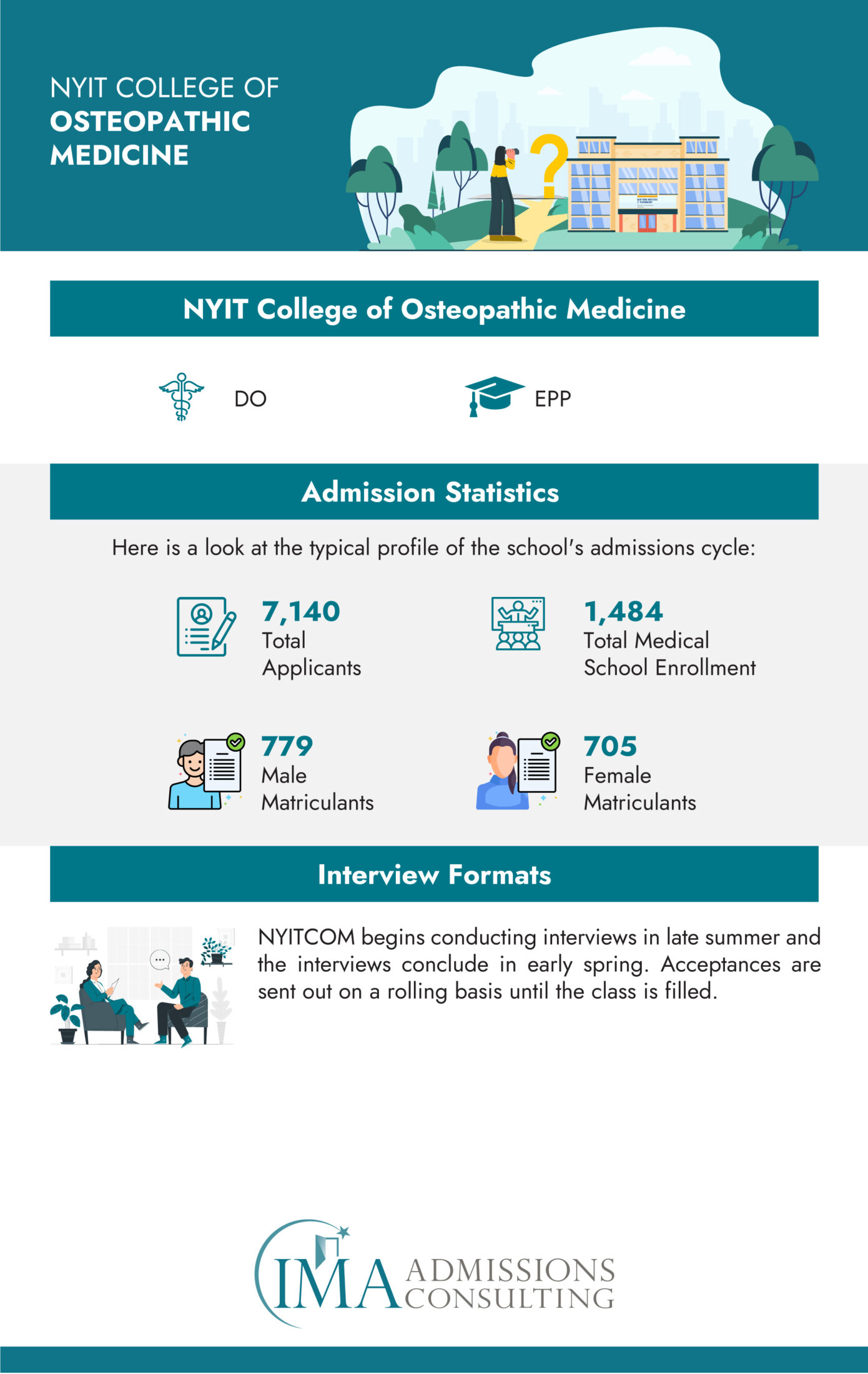
New York Institute of Technology College of Osteopathic Medicine Tuition and Cost of Attendance
In addition to tuition and fees, NYIT students should budget for incidentals, textbooks, supplies, and living costs. The Office of Student Financial Services has provided the following estimated figures for the upcoming school year.
Year 1:
- $61,960 Tuition
- $1,029 Miscellaneous Fees
- $600 Simulated Patient Fee
- $63,589 Total
Year 2:
- $61,960 Tuition
- $1,040 Miscellaneous Fees
- $600 Simulated Patient Fee
- $63,600 Total
Year 3:
- $61,960 Tuition
- $865 Miscellaneous Fees
- $525 Simulated Patient Fee
- $63,350 Total
Year 4:
- $61,960 Tuition
- $865 Miscellaneous Fees
- $375 SImulated Patient Fee
- $475 Graduation Fee
- $63,675 Total
AACOMAS Primary Application and NYITCOM Secondary Application
The AACOMAS is the primary application for DO schools in New York and across the US. Your primary application is sent to all of the medical schools that you apply to. For NYITCOM, it takes approximately four to six weeks for your AACOMAS primary application to be reviewed. While four to six weeks is the standard amount of time it takes for someone to review your initial application, this length can be affected by a variety of factors. If you do not hear back within six weeks, do not become immediately discouraged.
After receiving your primary application, the NYIT College of Osteopathic Medicine will invite you to fill out the school’s secondary application. All secondary applications are school specific, and these applications include questions that the school feels are important in determining if you will be a good fit for the institution.
Please note that you will not be invited to complete the NYIT secondary application if you do not meet the admissions requirements outlined previously in this article. For a refresher on what the required premedical coursework is, go back to the required coursework section. You will also want to note if you have participated in any of the additional recommended coursework outlined by the NYIT College of Osteopathic Medicine.

NYIT Secondary Application: Essay Prompts, Sample Essay Answers, and Advice
Completing your secondary application is a critical part of applying to a medical school. In the secondary application, you can express your character, ambitions, motivations, and more. This is your chance to demonstrate what makes you a unique and ideal candidate for the NYIT program. Here are a few tips for submitting a successful secondary application to the NYIT College of Osteopathic Medicine:
- Read and pay close attention to each essay prompt on the application and address all of its questions in your response.
- When supporting your responses, use concrete evidence from your academic, professional, and extracurricular experiences.
- Do not simply repeat information from your AACOMAS. In the same realm, use the secondary application as an opportunity to explain further anything that you feel you did not get to go into great detail about in the primary application.
- Thoroughly proofread and edit your application materials before submitting them.
- Write each and every essay in a clear and concise manner. Omit any unnecessary words and sentences, avoid filler, and ensure you stay on topic per the essay’s prompt.
- Consider utilizing IMA’s admission consulting. Writing thousands of words for medical school applications can be time-consuming. Admissions consultants help by taking an in-depth look at your application and finding areas for improvement.
The NYIT secondary application costs a fee of $80 and typically includes 3 to 6 essay prompts.
Essay #1
Briefly describe the reasons for your campus/site choice and comment on one or two factors that are most important to you in choosing where you wish to pursue your medical education. (Max. 1000 characters)
Applicants should briefly state what they value in a college campus/site and why they chose to apply to NYITCOM after learning more about their campus.
Here is a sample answer:
When it came to deciding where I wanted to pursue my medical education, there were a lot of key factors to consider—location, campus life, academics, etc. While all of these factors are important and played a role in my decision to pursue an education at NYIT, the two key components for me were location and campus diversity.
The campus’s location and the convenience of the location played a role in my selection as I went into my college search hoping to find a reputable college with great academics near my current home. After researching what felt like hundreds of colleges and weighing out the location, quality of education, and a welcoming environment. The university’s Long Island (Old Westbury) campus location is the ideal location for me and my medical education journey. It’s close proximity to my current residence allows me the freedom to visit family often and live off campus if I want to.
NYIT’s commitment to providing a diverse campus and learning environment also played a part in my decision as it is important to me. I want to be challenged to see new, unique perspectives as I learn. These diverse perspectives will allow me to be a better future physician upon graduating.
Essay #2
Have you previously applied to NYITCOM? If yes, what specific steps have you taken to strengthen your credentials for the current application year? (Max. 1000 characters)
This essay prompt will only need to be answered if you have applied to NYIT in the past. If this question applies to you, take your time to thoroughly explain what courses, experiences, and extracurriculars you have since taken or participated in to strengthen your application.
Essay #3
How and where did you learn about NYITCOM? (Max. 250 characters)
This prompt requires you to provide a brief response about where and how you learned about the NYIT College of Osteopathic Medicine.
Here is a sample answer:
I first learned about the NYIT College of Osteopathic Medicine from a family friend who is an NYIT alum.
Medical School Admissions Consulting
At International Medical Aid, we make it a point to offer aspiring medical professionals thorough and informative content. We understand that getting into med school is hard work, and we want you to succeed during the application process.
One of the best ways to boost your medical school program application is with the expert help of an admissions consultant. Whether you need guidance writing your essays, developing an application strategy, or navigating the process, we are here to help.
We recommend taking a moment to schedule a free consultation with IMA here.
Voluntary Healthcare Internships Abroad
IMA’s voluntary healthcare internships provide students with the opportunity to shadow doctors, gain valuable medical field experience, and work in hospital and clinical environments. All of the internships we offer are intensive and patient-facing. Through International Medical Aid’s pre-med shadowing study abroad programs, aspiring med students gain real-life clinical experience and become further prepared for medical school.
The internships go far beyond creating a compelling medical school application. IMA’s programs serve struggling areas and populations across the globe. By interning abroad, you can develop your communication skills, serve the medically underserved, and broaden your perspectives.
There is a lot to learn when it comes to our pre-med shadowing study abroad programs, so please take the time to explore the programs on our website.
Good Luck!
We want to wish you good luck as you navigate the med school application process. Remember to be strategic about your application, take your time, and do not hesitate to ask for help.
Applying for medical school programs is often a stressful and overwhelming process that is hard for new students. If you feel you may need additional help with your application, essay responses, or prepping for your upcoming semester, don’t forget to utilize IMA’s consulting services.
If you are considering applying to any other DO schools in NYC or other cities and states, we have ultimate guides for most med schools available on our website. Whether you want to know “how medical schools stack up to other medical schools near me” or just want to check out guides for other colleges, don’t forget to check out our ultimate guides.
- NYU Long Island School of Medicine
- TOURO College of Osteopathic Medicine
- Albany Medical College
- Norton College of Medicine at Upstate Medical University
- Jacobs School of Medicine at the University at Buffalo
- Hofstra Zucker School of Medicine
- Weill Medical College of Cornell University
- University of Rochester Medical School
- Icahn School of Medicine at Mount Sinai
- Renaissance School of Medicine at Stony Brook University
- Albert Einstein College of Medicine
- Ohio University Heritage College of Osteopathic Medicine
- Northeast Ohio Medical University (NEOMED)
- University of Cincinnati College of Medicine
- University of Toledo College of Medicine
- Wright State University Boonshoft School of Medicine
- Ohio State University College of Medicine
- Rowan University School of Osteopathic Medicine
- Hackensack Meridian School of Medicine (HMSOM)
- Rutgers New Jersey Medical School (NJMS)
- Rutgers Robert Wood Johnson Medical School
- Cooper Medical School of Rowan University (CMSRU)
- A.T. Still University Kirksville College of Osteopathic Medicine
- Saint Louis University School of Medicine
- University of Missouri Medical School
- Kansas City University (KCU)
- UMKC School of Medicine
- New York Medical College
- University of Pittsburgh School of Medicine
- University of Wisconsin Medical School
- VCU School of Medicine
- University of Maryland School of Medicine
- Case Western Medical School
- University of North Carolina Medical School
- University of Florida Medical School
- Emory University School of Medicine
- Boston University College of Medicine
- California University of Science and Medicine
- UC San Diego Medical School
- California Northstate University College of Medicine
- Touro University of California
- CHSU College of Osteopathic Medicine
- UC Davis School of Medicine
- Harvard Medical School
- UC Riverside School of Medicine
- USC Keck School of Medicine
- UT Southwestern Medical School
- Long School of Medicine at UT Health San Antonio
- University of the Incarnate Word School of Osteopathic Medicine
- UT Austin’s Dell Medical School
- UTMB School of Medicine
- McGovern Medical School at UT Health
- Johns Hopkins School of Medicine
- McGovern Medical School at UT Health
- The University of Texas Rio Grande Valley School of Medicine
- UNT Texas College of Osteopathic Medicine
- University of Houston College of Medicine
- Texas A&M College of Medicine
- Johns Hopkins Medical School
- Baylor College of Medicine
- George Washington University School of Medicine
- Vanderbilt University School of Medicine
- St. George’s University School of Medicine
- Lake Erie College of Osteopathic Medicine (in Pennsylvania)
- Sidney Kimmel Medical College at Thomas Jefferson University
- Wake Forest University School of Medicine
- Western University of Health Sciences (in California)
- Drexel University College of Medicine
- Stritch School of Medicine at Loyola University Chicago
- Georgetown University School of Medicine
- Yale School of Medicine
- Perelman School of Medicine
- UCLA Medical School
- NYU Medical School
- Washington University School of Medicine
- Brown Medical School


